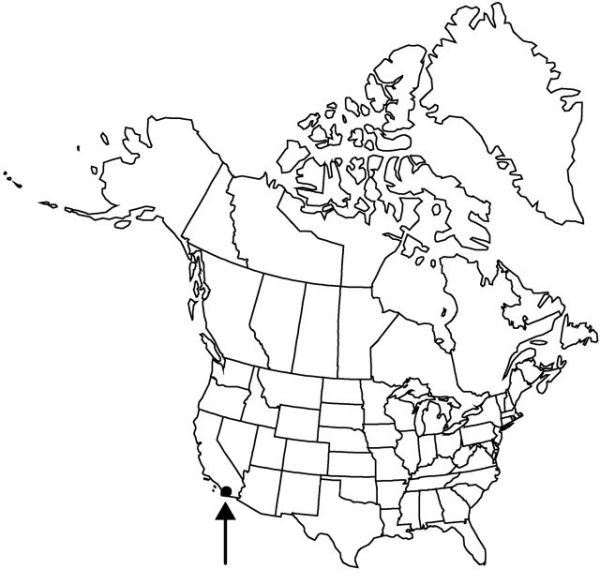Difference between revisions of "Nolina interrata"
Madroño 8: 181, fig. 1, plate 19. 1946.
FNA>Volume Importer |
FNA>Volume Importer |
(No difference)
| |
Revision as of 21:45, 16 December 2019
Plants acaulescent; rosettes from branching, horizontal, subterranean caudices from lignotubers. Leaf blades 30–150 cm × 12–35 mm, glaucous; bases 15–70 mm wide; margins serrulate. Scape 0.7–9 dm, 5–18 mm diam. Inflorescences compound paniculate, branched distally, 5–11 dm × 10–50 cm; bracts persistent, 2–15 cm; bractlets laciniate. Flowers: tepals 2–3.5 mm; fertile stamens: anthers 1.1–1.7 mm; pedicel erect, proximal to joint 1–2(–4.5) mm, distal to joint 1–2 mm. Capsules thin-walled, 7–12 × 9–15 mm, notched basally and apically. Seeds bursting ovary walls, 4–6 × 3–4 mm.
Phenology: Flowering early spring–early summer.
Habitat: Rocky hillsides of chaparral
Elevation: 200–700 m
Distribution

Calif., Mexico (Baja California).
Discussion
Of conservation concern.
Nolina interrata is very rare and is listed by the U.S. Fish and Wildlife Service as rare and endangered. Its habitat is threatened by development.
Selected References
None.